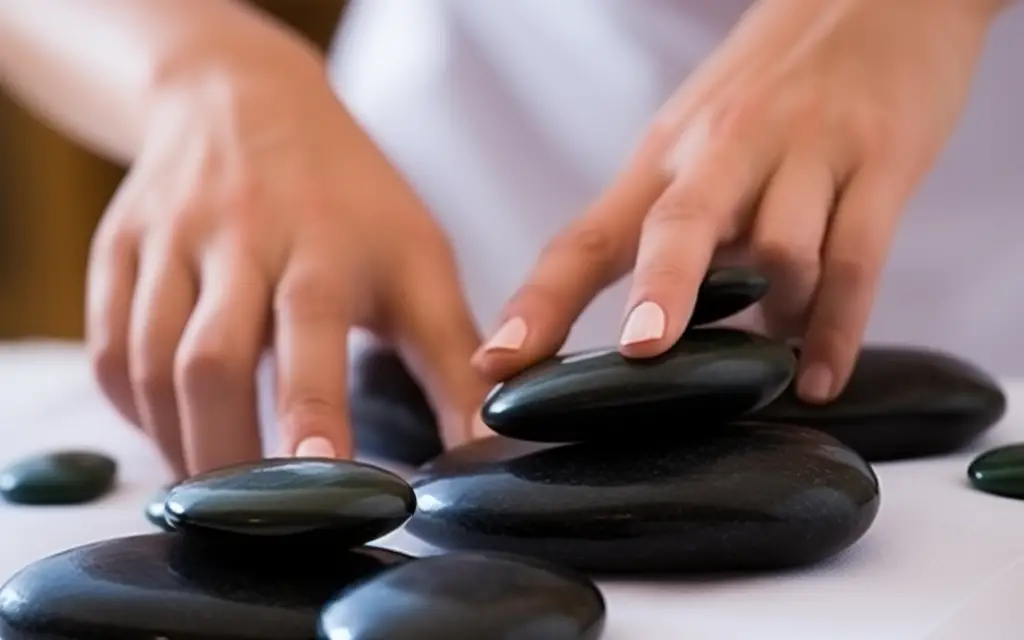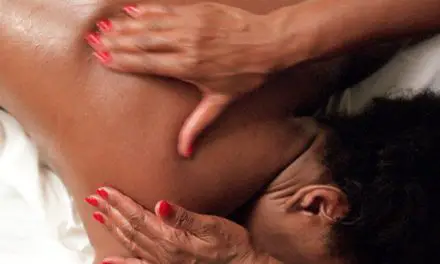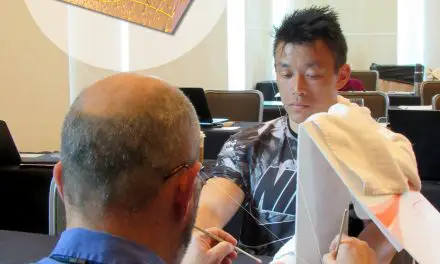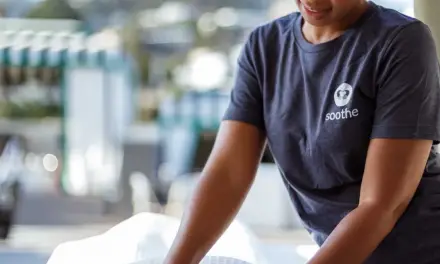Hot stones are added to a massage as an enhancement. The therapist holds a stone in their hand and applies it in gliding motions, inducing relaxation. It’s often used to soothe sore muscles and joints. This is a form of thermotherapy, the practice of using heat or cold in a massage.
The origins of hot stone massage can be traced back thousands of years to East Asia and Native American cultures. Women in Eastern Asia used them to alleviate menstrual cramps, and Native American cultures included them in purification rituals and for relaxation. Hot stone massage became mainstream in the early 1990s and is still popular today.
What types of stones are used?
The stones used are typically basalt, which are volcanic in origin. Dense and rich in minerals, they are formed when magma from a volcano eruption cools down. They retain heat well and are smooth, making them the most popular choice for a hot stone massage.
Another popular type of stone is Himalayan salt, which has a slightly rough texture. Despite its name, Himalayan salt is actually mined in the Punjab region of Pakistan. It’s harvested for its unique pink color and used to make a wide variety of goods, from food coloring and distinctive lamps.
Hot stones are versatile tools that can be used in many different types of massage. They’re most commonly used in a Swedish massage to focus on relaxation. Sometimes they might be used in a deep tissue massage to address specific concerns, like pain and stiffness.
What should you expect in a hot stone massage
A session is usually an hour long, but many places offer 90-minute sessions. First, your therapist will ask you questions to determine if hot stones are right for you and tailor your session to your needs.
After the consultation, you’ll be asked to undress to your comfort level and get under the blanket and sheets. Your massage therapist will leave the room to let you do that. You may be asked to begin in a prone—face-down position—with your face in the table’s cradle. Depending on their technique, some therapists may request that you begin supine or face-up.
You’ll be kept covered up and warm throughout the massage. Your therapist will only undrape the area of your body they’re working on. Many therapists begin with the back, where you’ll feel oil or lotion applied first. Then, using light pressure, the therapist will hold the stones in their hands and glide them over your skin.
Hot stones are heated to 120°F to 140°F (48.9°C to 60°C), so they’ll feel pretty warm. This should feel soothing, but if they’re too hot, you should let your therapist know right away. It’s their job to make you comfortable, so don’t hesitate to speak up.
The hot stones will be used throughout the session. A complete set of stones might include sizes big enough to be used all over your back and small enough to fit in between your toes.
Benefits of a hot stone massage
Hot stone massage can provide the following benefits:
- Eases muscle and joint pain
- Increases local circulation
- Reduces stress and anxiety
- May alleviate cancer symptoms
- Reduces muscle tension and spasm
- Elevates your mood
- Promotes sleep
- Exfoliates the skin
Muscle and joint pain relief
If you find yourself reaching for a hot pack when you’re feeling sore, you know that heat can have an analgesic effect. A 2020 study found that heat helps to reduce post-workout muscle soreness. Its soothing effects also calm down the nervous system, reducing the “fight-or-flight” effect. Chronic exposure to this type of anxiety can amplify sensations of pain in the body, part of a phenomenon called central sensitization. Regular massage can help alleviate its effects.
Increased circulation
Although there’s limited evidence showing that massage increases overall body circulation, it can benefit the skin by increasing its ability to absorb products. This is known as skin permeability. The heat from the stones can boost permeability and allow substances like skin hydrators to penetrate more deeply. This would be most effective if the lotion being used is specifically formulated with ingredients that are nurturing to the skin.
Reduces stress and anxiety
Stress is one of the top reasons why some people seek out massage. We find deep comfort in touch, just like our primates do when they engage in grooming. Birds practice in their own version called preening. This social aspect is what makes getting a shampoo or manicure so relaxing. Even a simple hug or hand-holding can have profound emotional impact.
It’s also believed that touch is crucial to our development and well-being throughout life. We use touch as a form of non-verbal communication to convey empathy, which soothes us and strengthens our social bonds.
Touch releases oxytocin, a hormone associated with feelings of well-being and stress relief. Oxytocin is released in response to gentle touch, stroking, and warmth—all of which are part of a hot stone massage.
May alleviate cancer symptoms
Massage is becoming more sought after as a treatment for cancer symptoms. It’s been shown to reduce pain in cancer patients by up to 60% and is increasingly recommended as a non-invasive option. In a study of 34 patients awaiting bone marrow transplants, massage therapy reduced diastolic blood pressure and relieved nausea and anxiety. 16 random patients received 20 minutes of neck, shoulder, face, and scalp massage up to nine times during their hospital stay. The remaining 18 patients did not receive any massage.
The study did have some drawbacks. It was limited to a small group, and the patients who received a massage were seen by the same therapist each session. The study was done with traditional manual massage, not with hot stones. The results are encouraging and suggest that massage overall is useful in alleviating symptoms of patients undergoing bone marrow transplants.
Some independent therapists are specially trained in oncology massage. They’re equipped to address the risks of massage on immunocompromised people and to work with the skin issues that come with cancer treatment. This type of training is especially important when the massage includes hot stones.
Reduces muscle tension
Another common reason people seek out massage is muscle tension. You may be familiar with the body’s stress response known as “fight-or-flight.” This is carried out by the autonomic nervous system, which controls involuntary actions of the body. Part of this response is to prepare the body for extensive movement as a reaction to perceived danger.
Chronic activation of “fight-or-flight” can lead to habitual muscle tension. You might notice this when you’re fighting traffic and realize your shoulders have nearly crept to your earlobes. Gentle application of heat on the skin, coupled with the attentive touch from a massage therapist, has soothing effects on the autonomic nervous system.
Elevates your mood
After years of social distancing, many people find themselves feeling isolated and craving human connection via touch. Research has consistently shown that massage can decrease depression in adults. Humans respond positively to attentive and focused touch, experiencing a release of oxytocin that provides comfort and promotes positive social interaction.
Promotes sleep
The pacifying nature of massage, with its slow cadence, makes it an excellent natural sleep aid. The addition of hot stones can complement this effect.
A 2022 study sought to compare effects of massage on adult ICU patients and their quality of sleep. Although the study size was limited, the results over two nights showed improved sleep among the critically ill who received a massage. It’s worth noting that this study included foot reflexology, which may not be part of a standard hot stone massage, depending on the therapist.
Exfoliates the skin
The uppermost layer of your skin is called the stratum corneum. It’s constantly shedding dead skin cells, but this process slows down as we age. Himalayan salt stones have a slightly rough texture that gently exfoliates, revealing fresh skin that is able to absorb moisturizers more effectively.
Risks and precautions
You might be wondering, “Does hot stone massage hurt?” When performed properly, there should be no pain. There are, however, a few risks include:
- Burns: Skin burns are the biggest risk. It’s common to see promotional images of stones placed along the spine. In reality, this can cause mild to serious burns. This is why the stones are usually kept moving. As always, let your therapist know right away if they are too hot for your comfort.
- Dehydration: Prolonged heat exposure can lead to dehydration. Ask for water if you feel thirsty during your massage, and remember to drink water afterwards to replenish.
There are also factors that require extra precautions when receiving a massage. Make sure to communicate to your therapist if you have the following:
- Pregnancy: Hot stone massage is generally safe to receive during pregnancy as long as you do not overheat. Studies suggest that excessive exposure to heat can have adverse effects during pregnancy. If you’re expecting, make sure to see a therapist who is specially trained in prenatal massage.
- Diabetes: The body’s cooling mechanisms can be compromised in people with diabetes. This is usually due to blood vessel and nerve damage. Avoid too much heat.
- Skin inflammation: Topical heat will aggravate inflamed skin. This includes rosacea, sunburn, eczema, rashes, and severe acne. Avoid applying heat anywhere that the skin has become reddened.
- Peripheral neuropathy: Neuropathy can interfere with your ability to tell if a stone is too hot. It may not be a good idea to get a hot stone massage in this case.
- High blood pressure: Heat causes vasodilation, which means the blood vessels expand to allow more blood to travel through. Your massage therapist may only allow you to receive a massage if your blood pressure is under control with medication.
- Thin, fragile skin: The skin of children and the elderly is thinner, making it more prone to burns. This also applies if you take prescription retinoids, oral acne medications, and corticosteroids.
- Menopause: If you experience frequent hot flashes, hot stone massage may be uncomfortable. Ask your therapist to avoid other sources of heat, like a table warmer or hot towels, and don’t schedule a session longer than 60 minutes.
How much is a hot stone massage?
Hot stone massage is often an optional upgrade that adds $20–$40 to the price of a regular massage. Across the U.S., the total price of a one-hour hot stone massage varies from $90–$140. High-end luxury spas will usually be more expensive than a franchised chain or an independent practice. If you’re on a budget, consider checking out new client specials and coupon sites like Groupon.
Can I use hot stones on myself?
Do-it-yourself (DIY) hot stone therapy can save you money, but it comes with risks. If you decide to purchase a warmer set, find one that is high quality and comes with a warranty.
Read the instructions and test the temperature of the stones before using them. Professional warmers regulate the heat of the stones. This is why you want to avoid home methods like using a slow cooker or boiling water.
Keep in mind the smoothness and weight of the stones. Combining them with slippery oil can lead to accidents and injuries.
Do not place stones on your skin and leave them there. Keep them moving. It can be surprisingly easy to end up with a burn, even if it feels fine at the time. According to the American Burn Association, it takes a mere five seconds for an object or liquid at 140°F (60°C) to cause a severe burn.
Although DIY may be tempting, hot stone massage is best left to professionals. Not only do they have proper training, it’s more relaxing and convenient to get a massage from someone rather than giving one to yourself.
How to find the right massage therapist for you
It’s ideal to find a massage therapist that has had official training in massage therapy. Many, but not all, states in the U.S. require a massage license. The road to licensure involves formal schooling and passing a licensing exam. It may also require continuing education for license renewal.
For states that don’t require licensing, such as California, a massage therapist may choose to get certified. Certification verifies that they have met a certain set of criteria to work in their field. In either case, a therapist who has been formally trained will be more likely to know how to deliver a safe and secure massage experience.
Like with any business or practice, it’s always a good idea to read the reviews posted on Google. You can also ask friends, family members, and co-workers for referrals.
When looking for a good fit, consider the following questions:
- Is this your first time getting a massage?
- Do you prefer pressure that’s on the lighter or deeper side?
- Is your therapist experienced in dealing with a wide range of health conditions? As mentioned earlier, issues like diabetes and neuropathy require an educated approach.
- Do you require any accommodations? If you have a hard time lying on your stomach or getting onto a massage table, for example, you’ll want a therapist that knows how to address that.
If you decide to go to a chain location, you can talk to a front desk person to find a therapist who is a good fit. Let them know you are interested in trying a hot stone massage, and that it’s your first time.
Is a hot stone massage really worth it?
Many people are increasingly seeking prescription-free ways to address pain, and research supports the use of massage as a non-invasive option. With a variety of benefits, it’s an option if you’re dealing with specific issues like stress and muscle pain, or if you just want to indulge yourself—or that loved one on their birthday.

Raquel Wong, LMT, LME
Raquel Victoria Wong is a licensed master esthetician, cosmetologist, instructor, and massage therapist. She began in the beauty field, studying at Eric Fisher Academy in her hometown of Wichita KS. As an instructor, she was nationally recognized with an award for “Excellence in Esthetics Education.” After attending Northwest Academy for the Healing Arts in Seattle, Wash., she transitioned into a career in massage, which she practices today. She is currently working on a bachelor’s in Health and Human Services. Raquel speaks Spanish and is an artist in her free time, drawing portraits of people and pets.





